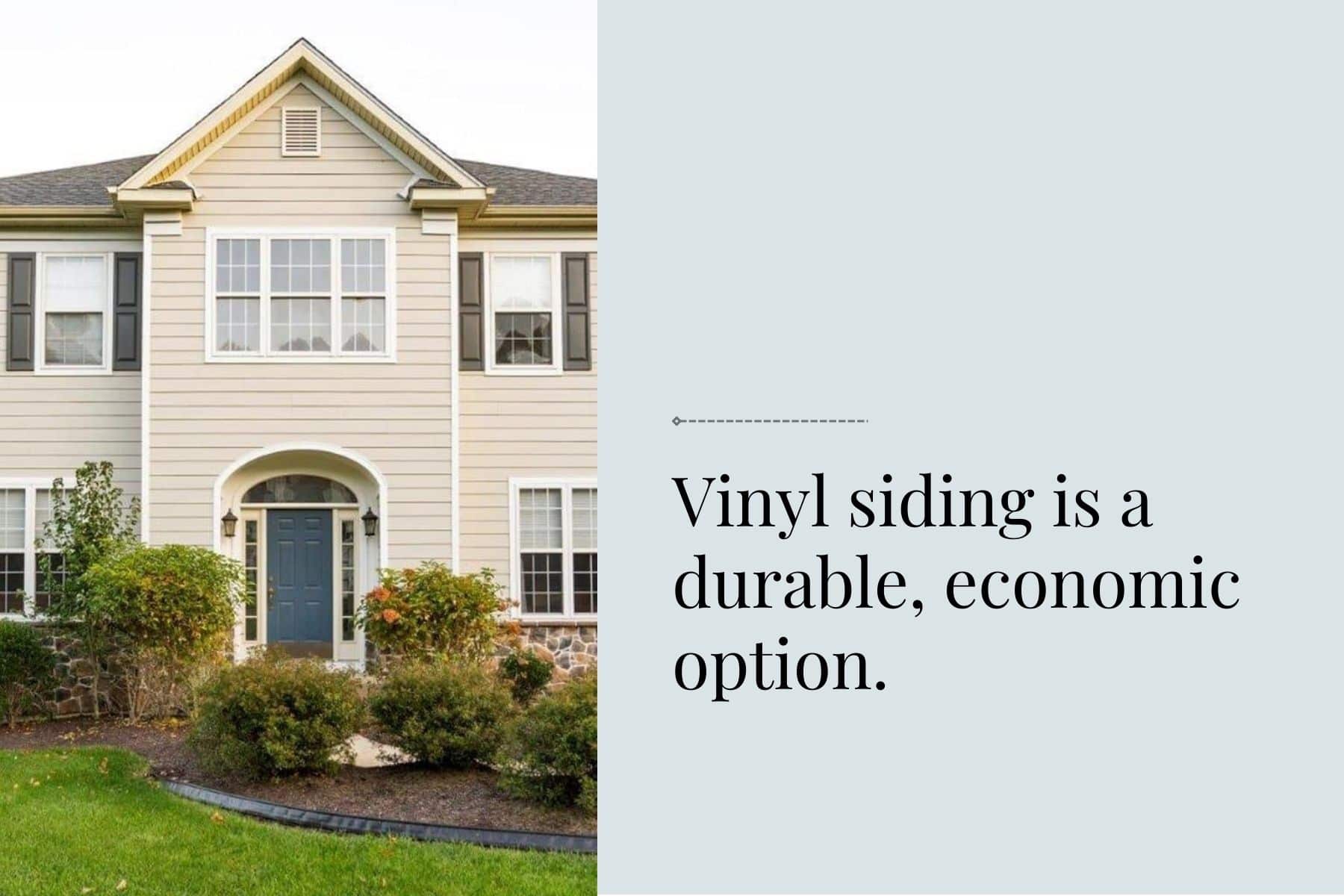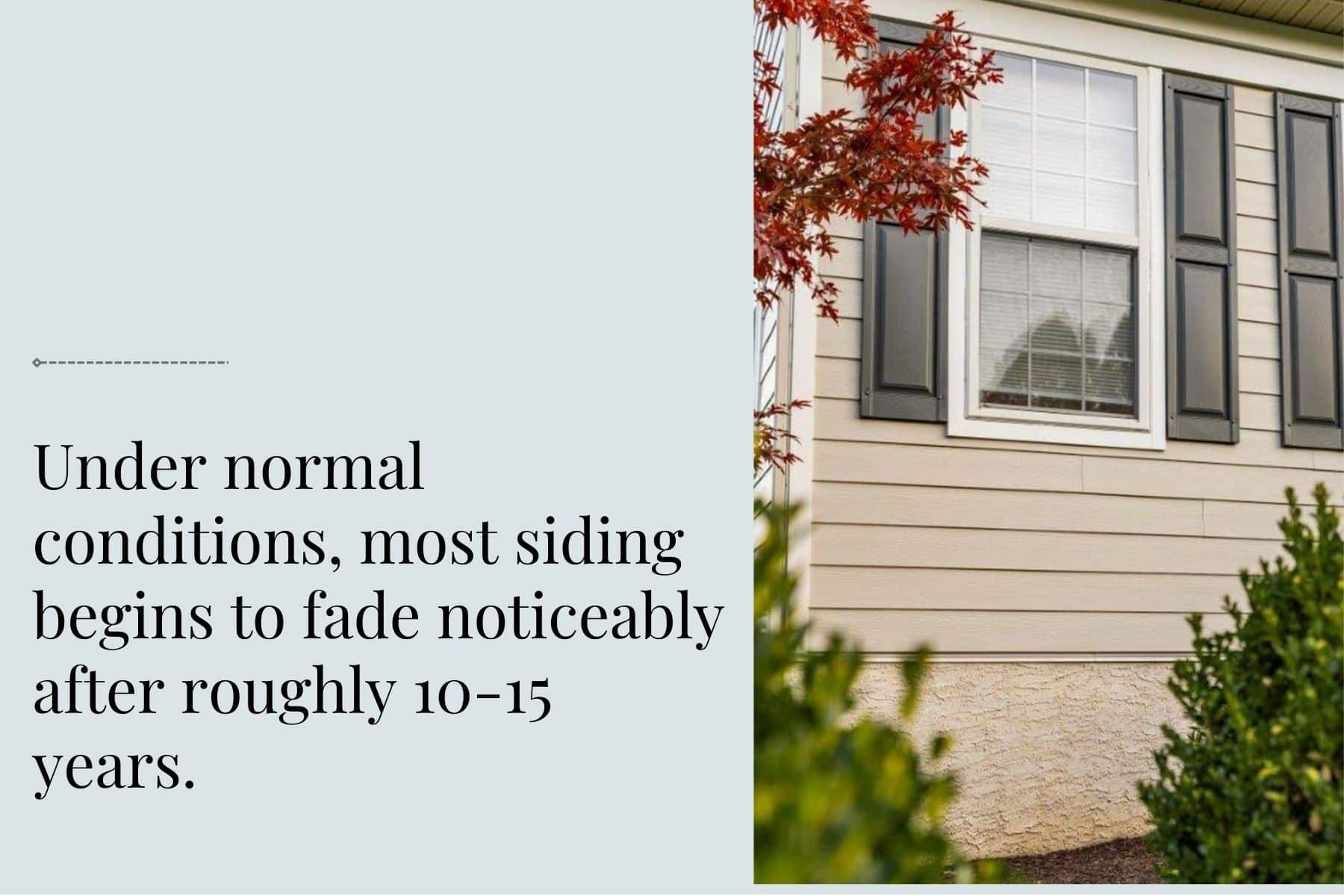A Guide to Vinyl Siding
As a homeowner, you want to make the best possible decisions regarding materials for your home.
But with all the different options, option overload is a genuine concern. How do you know what materials are best for your unique situation?
The truth is that only you can answer that question. But today, Choice Exteriors would like to help you make a wise decision by guiding you through the ins and outs of vinyl siding.
We’ll cover vinyl siding’s pros, cons, and alternatives, plus some factors you should consider when making a decision about siding.
Ready to learn more?
Let’s get started!
What Is Vinyl Siding?
Vinyl siding is extremely common, so you’ve likely seen it hundreds of times on houses near you.
Vinyl siding is made from PVC resin (a type of plastic) and serves as both weatherproofing and decoration on home exteriors. It can be made to imitate the look of wood clapboard, shakes, battenboard, or other types of siding, but it has some distinct differences from these materials in its durability and the amount of maintenance required to keep it looking great.
Companies began manufacturing vinyl siding in the 1950s as an alternative to aluminum siding. In the early days, manufacturers struggled to produce a quality, consistent product, but manufacturing has improved since then, and today you can get high-quality vinyl siding that lasts for years.
In a nutshell: Vinyl siding is an attractive, durable, and low-maintenance plastic alternative to other siding materials. Now, let’s get into the details!
6 Pros And Cons Of Vinyl Siding
Now that we know what vinyl siding is, let’s look at why you would (or wouldn’t) want to opt for vinyl siding on your home.
We’ll start by looking at why vinyl siding is a popular choice by looking at its pros.
PROS
- Inexpensive
The first thing you are likely to find when you start researching vinyl siding is that it is one of the most economical options for protecting the exterior of your home. For homeowners who aren’t looking for anything fancy, it’s a perfect low-cost option.

- Versatile style options
Your siding material is one of the most visible components of your home, so you want it to be attractive. Thankfully, vinyl siding provides plenty of options–you can get types that imitate board and batten, shakes, or other styles, and plenty of color options are available.
- Low maintenance
You probably don’t want to add another item to your maintenance checklist–and if this is the case, vinyl siding is perfect for you, as it requires very little maintenance. The most you should have to do regularly is give it a good wash when it starts looking dirty.
Other than that, vinyl siding maintenance is just repair/replacement if it should get bent, broken, or melted.
- Easy installation
Vinyl siding is lightweight, comes ready-made, and is easy to install. That means you save on time and labor when constructing your home.
- Durability
If all goes to plan, vinyl siding could last up to 60 years. How long your siding holds up depends on numerous factors, so yours might not remain in acceptable condition for quite 60 years, but the fact remains that vinyl is rated as one of the longest-lasting siding options.
- Simple to repair
If your vinyl siding gets cracked or broken, it is relatively simple to repair. Usually, you can easily remove only the damaged piece of siding without needing to take additional pieces off.
If you see minor cracks or breaks, it’s possible to repair siding cracks with a little patching putty and elbow grease, but replacement is your only option for larger breaks.
CONS
Vinyl siding has its benefits–but like all materials, it also has some drawbacks. Let’s look at a few of these so we get an unbiased view of it.
- Fading
Vinyl siding does fade in bright sunlight, which is a major downside. Dark colors tend to fade more than light colors. Under normal conditions, most siding begins to fade noticeably after roughly 10-15 years.
Fading may not seem too problematic until you must replace just part of your siding. Then you may see a difference between the old and new pieces.

- Not heat resistant
Being made of plastic, vinyl siding is not heat resistant. If your grill or firepit is too close, it might melt or warp the siding.
- Not eco-friendly
Remember–vinyl siding is made of PVC, which is a type of plastic. That means it’s not the most eco-friendly option on the market. If you are eco-conscious, vinyl may not be the material for you.
- Breakable over time
Over time and under certain conditions, vinyl may become brittle and prone to breaking. Then a stray football or heavy wind could cause cracks and breaks.
- Limited repair choices
If your siding fades or gets damaged, you have just one option: replace the entire damaged piece. This could be an issue if your siding is older (you may not be able to get the exact color you started with) or faded (you’ll see the difference between new and old pieces.)
Also, repainting isn’t a great option if your siding does fade or you start disliking the color. The color goes the whole way through the piece, so you are stuck with what you got.
- Lack of authenticity
Vinyl siding can look good–but it’s not real wood. It only imitates the aesthetic of real shakes or clapboard. To some, the lower maintenance and higher longevity are worth the drop in charm and authenticity. But to others, the character and authenticity of “real” materials may be more important.
Alternatives To Vinyl Siding
We’ve looked at vinyl's pros and cons, and you might have a better idea of whether it’s for you or not.
If you don’t think it’s the best option for you, you could also look into the following siding options:
- Engineered hardwood siding
- Composite siding
- Metal siding
- Fiber cement siding
- Brick siding
- Stone veneer siding
- Stucco siding
One of these home siding options may be a better fit for your unique situation. But of course, each of these types of siding has its own set of pros and cons, and you may need to do more research before making a decision. If you have questions, feel free to contact Choice Exteriors!

7 Factors To Consider When Making A Final Decision About Siding
We’ve talked about some of the pros and cons of vinyl siding, but in reality, many factors come into play when you make a final decision about your home siding.
Your siding is possibly the most significant visible component of your home, so you certainly want to make a good decision about it.
Here are 7 things to think about when choosing siding:
- Conditions in your area - Your local weather conditions and climate affect your siding. Some siding types may not hold up as well in certain conditions.
- Styling options - Some siding types will suit you better if you are going for a certain aesthetic. Also, some siding types fit better with different architectural styles. For example, board and batten gives a cozy, homespun look that would suit a cottage-style home, whereas stucco would perfectly suit a southwestern style of home.
- Maintenance needs - Some types of siding are charming, attractive, and authentic but may be more troublesome to you than they are worth. How much effort you are willing to put into keeping your siding in good condition over time is entirely up to you.
- Affordability - Money comes into play too. Planning and sticking to a budget is normally a good idea, and some siding types may be easier on your budget than others.
- Local building codes and HOAs - Surprisingly, not all siding types are allowed in all areas. Your neighborhood may have building codes or HOAs (Homeowners Associations) that forbid you from using certain materials or colors.
- Scenery - Some siding types would not look good in certain surroundings. For instance, rustic cedar shakes may not blend into a highly urban setting with a backdrop of skyscrapers. And stucco homes look better in arid surroundings than in the middle of a pine forest.
Surrounding homes - While creativity is awesome, it’s normally a good idea to make sure your home at least somewhat blends with the homes surrounding it. Homes that stick out like sore thumbs can sell for less on the market and decrease neighborhood aesthetics.

Conclusion
Choosing siding materials is a big decision with many options and factors to consider! We hope this article helps you make a wise, informed decision about what siding you should choose for your home.
If you think vinyl siding is the best choice for your home in Southeastern PA, NJ, or DE, contact us here at Choice Exteriors! We install high-quality vinyl siding, stucco, and James Hardie siding and also offer other exterior home services, including:
Feel free to contact us today! We look forward to hearing from you.



